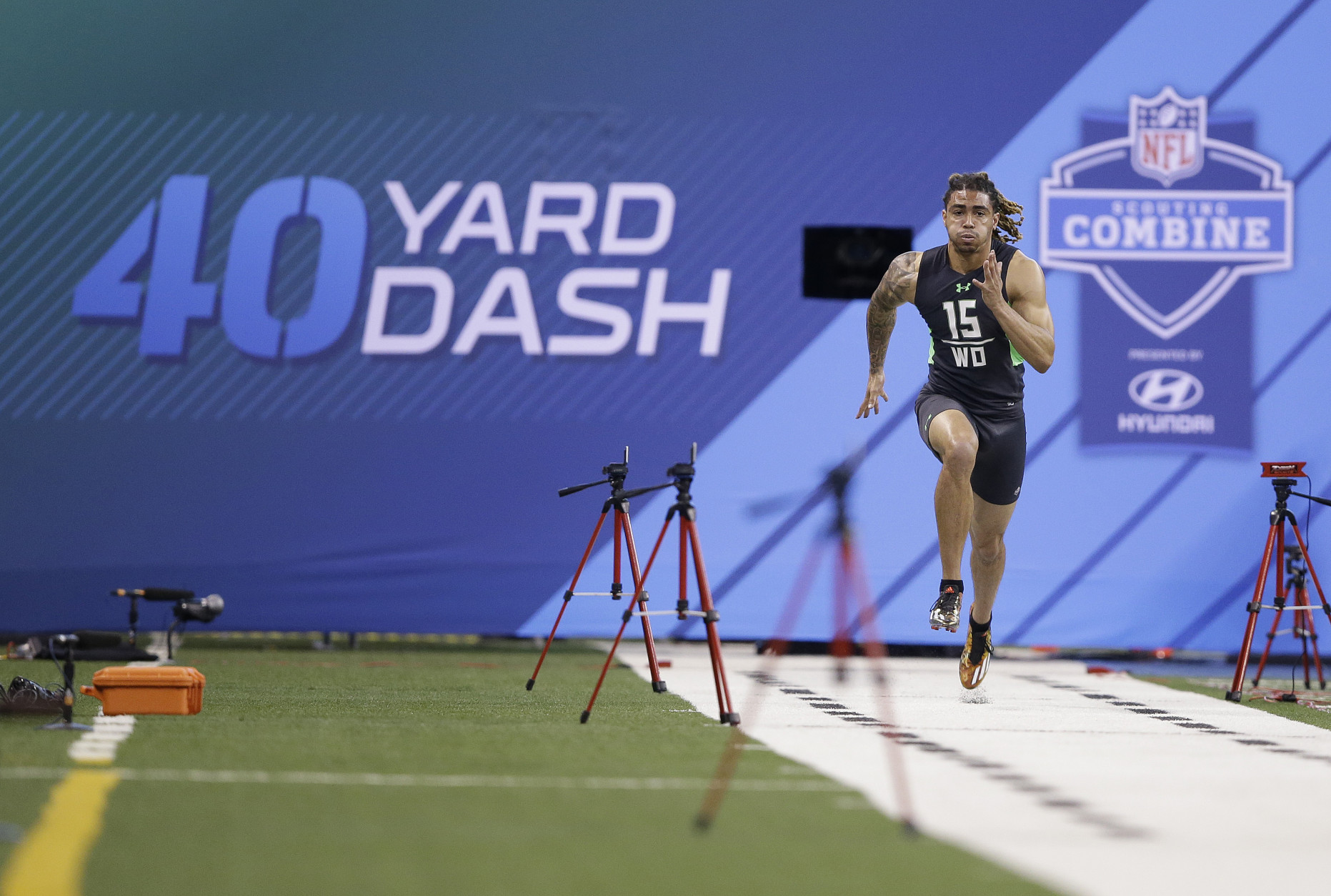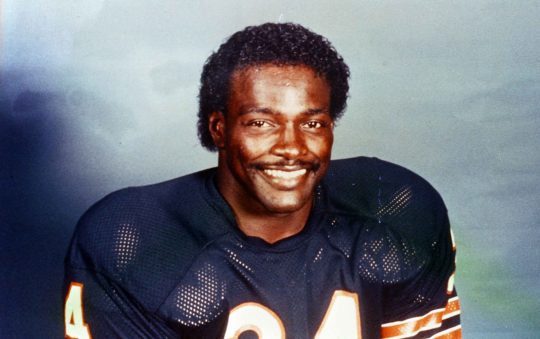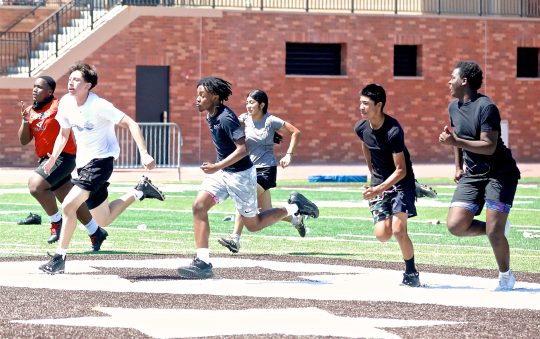
INDIANAPOLIS (AP) — Players running around in underwear. That’s the quintessential snapshot of the NFL scouting combine, or the entire pre-draft period for that matter.
The sprinting, jumping and shuffling in high-performance, form-fitting workout threads, though, is only a piece of this complex evaluation puzzle.
For all the attention on 40-yard dash times, bench-press repetitions and vertical leaps – fueled by an around-the-clock broadcast on the league’s own cable network – questions linger about the continued relevance of these activities during an era when mathematic and scientific advancement have taken player appraisal to places that never seemed possible before.
Don’t forget the career’s worth of college game film for NFL teams to watch, medical and psychological tests to conduct and private interviews to hold, plus the on-campus workouts at pro days. So in this 35th official edition of the combine, the last 30 of which have been in Indianapolis, what do these drills still mean?
To the players, a lot.
“It’s that one chance of a lifetime, and you have to make the most of it,” said Mississippi State’s De’Runnya Wilson, whose 4.85-second 40-yard dash time Saturday was the slowest among wide receivers who took part in the exercise. “Anytime you are out on a football field, you have to prove yourself, whether it’s a game, practice or drills.”
That’s the message that many evaluators around the NFL have been trying to emphasize, that participating in all of the activities, instead of sitting out the 40-yard dash at an agent’s advice or to avoid an injury, is important.
“Why wouldn’t you want to compete on a stage like this on national TV with millions of people watching you with every major decision-maker in the NFL in one spot?” Minnesota Vikings general manager Rick Spielman said. “Wouldn’t you want to reach out and thrive in that competition and show, ‘This is why I am who I am?'”
OK, but about that 40-yard dash. How relevant of a skill is that, really, for players who aren’t cornerbacks or wide receivers? National Football Scouting, Inc., the Indianapolis-based company that operates the combine, is in the process of a significant re-evaluation of the components of the annual event.
“The 40 has been in the game for a lot of years. Is it really necessary for an offensive lineman? Probably not. Does an offensive lineman have to run 20 yards? Well, he may have to get to a safety at 15 yards, so if he can run 20, he can run 15,” Pittsburgh Steelers general manager Kevin Colbert said.
Change might make it more difficult for teams to compare players historically, and that’s one line of resistance in the way of a combine update. If the Steelers, say, were trying to project a 2016 tackle prospect by comparing him to a player who excelled for them a decade ago, there would be no precedent for the rookie’s 20-yard dash time.
If the skills drills aren’t accurate translations of game-like actions, though, then wouldn’t some alterations make sense?
“I’d rather see them do 50 squats than 50 bench presses,” Arizona Cardinals coach Bruce Arians said. “I lost that bet a long time ago.”
The consensus from team officials, whatever feelings they have about specific types of drills, is that a round-up of best of the best in a central location prior to the draft for in-person observation of their athleticism remains critical to the process.
“The measurements kind of clarify in your mind what you’ve seen on tape,” Vikings coach Mike Zimmer said. “So if you watch a guy on tape and you see him and you say, ‘I’m not sure how fast he is,’ and he runs a 40 you’ve got a pretty good idea. Or if you have a guy that doesn’t change directions as well and then he does a good short shuttle or the three-cone or something like that.”
This is, after all, a fast-twitch, quick-movement sport.
“You have to be able to run. You have to be able to move. You have to be able to have fluidity in your movement. You have to be athletic. It doesn’t matter what position you play. There has to be an element of athleticism. You get a chance to see athleticism out here and you’re able to compare it to other receivers running around, other linebackers dropping, setting and breaking on the ball,” Atlanta Falcons general manager Thomas Dimitroff said. “I think there is a definite benefit here.”







